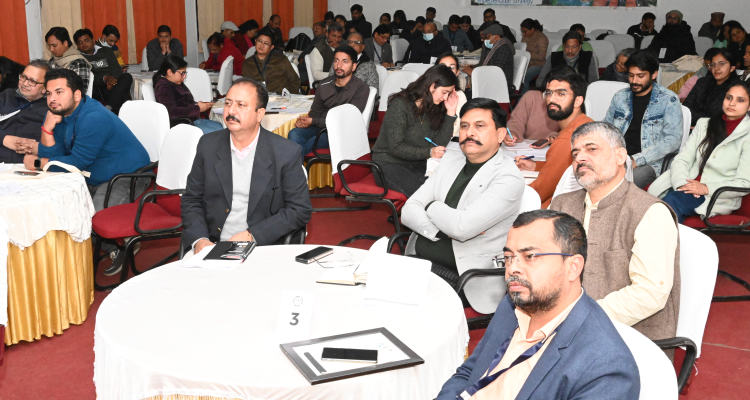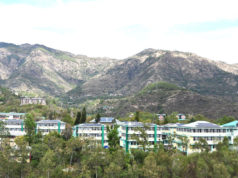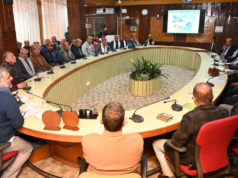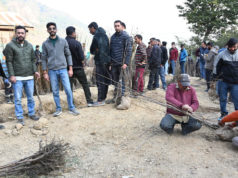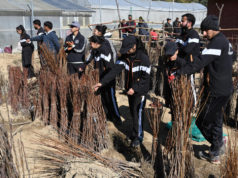Nauni/Solan: Disasters cannot be stopped fully but suitable measures and planning are needed to mitigate risk. These were among the several expert views expressed during the technical session on ‘Strengthening Resilience and Adaptive Capacity of Himalayan communities to Climate-Related Disasters’ during the three-day HIMSamwaad: Trans-Himalayan Conference on Localised Solutions and Implementation Strategy.
The event is being held at Dr YS Parmar University of Horticulture and Forestry, Nauni, in association with Sewa International and the Indian Ecological Society.
Professor A. K Mahajan from the Central University of Himachal Pradesh called for a check and stop on the unscientific widening of roads and said such constructions needed to be stopped to mitigate disaster before occurrence. Professor Mahajan focused on developing earthquake resistance buildings and suggested a minimum gap of 3-5 meters between houses and the construction of multistory buildings on only heavy rocks.
Prof. Ravindra S. Gavali¸ Head, Centre for Natural Resources Management, Climate Change and Disaster Mitigation, Hyderabad said that climate change in the future will lead to the probability of a decrease in groundwater, landslides, and flood risk. Prof. Gavali said drinking water services, agriculture, health and people with disabilities, sanitation and hygiene are vulnerable sectors and suggested afforestation and ecosystem-based allocation.
Dr Shobha Shrestha from Tribhuvan University, Nepal emphasised on the need to focus on the local and ground level and put a plan in place for the near and long term to adapt to climate-related hazards. She suggested that as there are varied income levels, therefore a vulnerability test should be done with the help of different cost-effective measures for different places with localized disaster management techniques.
In the second session on Diaspora and Trans-Himalayan Region, Anup Mudgal, Former Ambassador to Mauritius, who joined the discussions virtually, expressed his views on sustainable development in the Himalayas and Climate Change.
Mudgal pitches for a need to pay attention to sustainable development and should optimally utilize resources. He urged to scan the capacity of the ecosystem and rearrange it for the Himalayan sustainable development.
Experts called for studies for establishing the frequency of the disasters and for a check on non-scientific infrastructures such as dams, bridges, hydropower, and non-farm activities that may have an impact on the base of the Himalayas for economic gain.
During the conference, there was a consensus on the need to protect the Himalayas and hence cooperation with other organizations is the need of the hour. Additionally, the Himalayan region needs to start special programmes and address some economic issues because, despite Bhutan and Nepal’s efforts to do so, their small size prevented them from having a significant impact.


